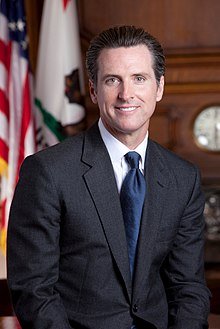Sacramento, CA…Citing decisions to build the state’s fiscal reserves and California’s economic growth, a major credit agency has upgraded the state’s credit rating. Fitch Ratings writes that California has improved its ability to weather an economic downturn. “The state eliminated the overhang of budgetary borrowing that had accumulated through two recessions and continues to set-aside funds in the budget stabilization account,” the agency wrote.

Governor Gavin Newsom celebrated the news.
“At a time when Washington is soaking Americans with a trillion dollars in debt to pay for tax cuts that benefit the wealthy, California is taking the exact opposite approach,” said Governor Newsom. “We are proving what big-hearted, progressive governance can look like. Our Rainy Day Fund is larger than at any time in our history. We are the job engine of America, and California is doing more than ever to help families tackle challenges of affordability.”
The 2019-2020 budget signed by the Governor made a series of investments in expanding the state’s financial security. The Budget will end the year with total reserves of $19.2 billion, of which $16.5 billion is in the Rainy Day Fund, $1.4 billion in the Special Fund for Economic Uncertainties, $900 million in the Safety Net Reserve and nearly $400 million in the Public School System Stabilization Account.
The Budget makes an extra payment of $9 billion over the next four years to pay down unfunded pension liabilities. This includes $3 billion to CalPERS and $2.9 billion to CalSTRS on behalf of the state, and $3.15 billion to CalSTRS and CalPERS on behalf of schools.
The Budget invests $4.5 billion to eliminate the Wall of Debt and reverses the decade-old deferral undertaken during the last recession.
The Budget prioritizes one-time investments, with 88 percent of new expenditures being temporary rather than ongoing. This addresses the affordability crisis facing Californians while minimizing ongoing commitments to avoid putting the state at fiscal disadvantage in the future.
###


